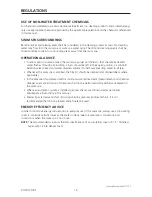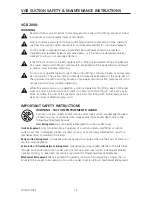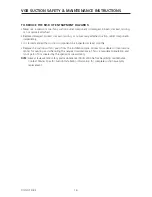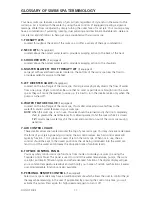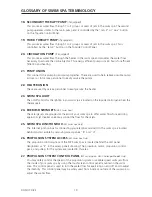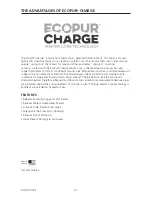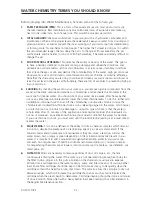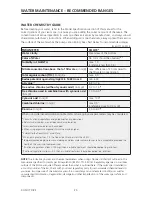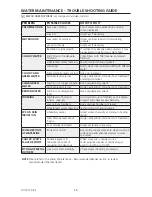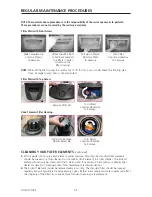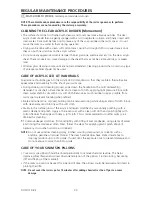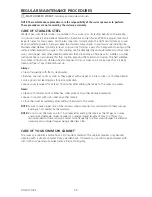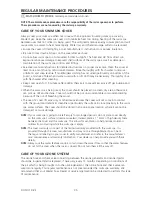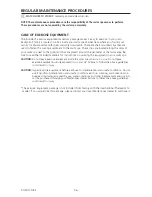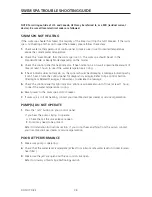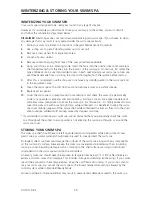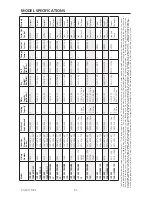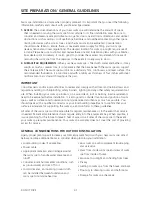
27
DO NOT DIVE.
100
DO NOT DIVE.
BEFORE EACH USE
Test the swim spa water for proper sanitation levels and adjust accordingly to the proper levels
outlined in the Water Chemistry Guide, found in the Water Maintenance – Recommended Ranges
section. Appropriate levels should be present before use of the swim spa. Bathers should not enter
the swim spa if the chlorine levels are outside of the safe, recommended ranges.
ONCE A WEEK
Add non-chlorine shock/oxidizer or chlorine to swim spa to help maintain the water quality.
3 TIMES A WEEK
Test the water. Adjust sanitizer, pH and Alkalinity accordingly, following directions on the chemical
manufacturer’s bottle. If free chlorine level measures less than total chlorine level, additional non-
chlorine shock/oxidizer treatment is necessary.
ONCE A MONTH
Soak your regular filter elements overnight in a container with swim spa Filter Cleaner and then
rinse with clean water. For best results, allow the filter to dry before re-inserting. (The EcoPur
®
element should never be cleaned in a filter cleaner. Just rinse with water.) When cleaning filters, be
sure to never have the pumps (including the circulation pump) running without the filters in place.
Failure to do so may result in debris being drawn into the pumps causing unwarranted damage.
See Cleaning Your Filter Elements in the Maintenance section of this manual for more information.
EVERY 180 DAYS
Drain and refill your swim spa with fresh water, install a new EcoPur
®
element, clean the regular
filter, and repeat start up procedure. The regular filter should be replaced at least once every year.
Over time and bather use, biofilm buildup can occur. Chemical products are available to help
remove biofilm and should be used periodically before draining.
AFTER EACH USE
Add non-chlorine shock/oxidizer or chlorine to the swim spa water.
AS NEEDED
If water looks hazy, check pH and Total Alkalinity, and treat with chlorine. Always refer to the
chemical manufacturer’s dosage recommendations listed on the container. Free chlorine levels
should be maintained per the Water Chemistry Guide.
These are general recommendations for water maintenance that may vary by usage and bather
load. Depending on bather load and frequency of use, drain and refill times may vary as well as the
frequency of cleaning your filters.
A defoamer may be used when excessive foaming occurs. Over use of a defoamer will result
in cloudy, milky water.
USE ONLY SWIM SPA CHEMICALS
Do not use chemicals designed for use in swimming pools.
With a swim spa you are working with a small volume of hot water compared to a large volume
of relatively cool water in a swimming pool. Because of this, chemicals will have a shorted life span
and bacteria can grow more quickly than in a swimming pool. A swim spa is less forgiving then a
pool and requires that whatever is put into it have a pH as close to neutral as possible. That is why
only chemicals made for swim spas should be used. Always refer to the chemical manufacturer’s
dosage recommendations listed on the container.
WATER MAINTENANCE – SCHEDULE
WATCH HOW-TO VIDEOS:
masterspas.com/video-tutorials

